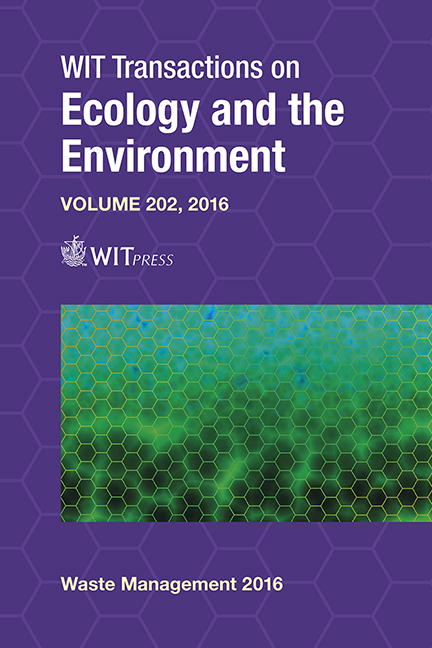A Review Of The Current Digestate Distribution Models: Storage And Transport
Price
Free (open access)
Transaction
Volume
202
Pages
13
Page Range
345 - 357
Published
2016
Size
394 kb
Paper DOI
10.2495/WM160311
Copyright
WIT Press
Author(s)
P. Vilanova Plana, B. Noche
Abstract
Over the past few years, the biogas sector has experienced an important growth in the number of biogas installations all over Europe, and consequently, the quantity of digestate also has had a significant increase. In Europe, biogas production by anaerobic digestion (AD) is a common source of renewable energy and the current amount of installations is around 13,000. Together with biogas, digestate is one of the two main by products resulting from the biogas process. The digested effluent is a liquid product rich in nitrogen (N), phosphorus (P), potassium (K) and micronutrients. Therefore, there is a wide variety of digestate utilization depending on the quality, the origin of the feedstock, the operating conditions of the process as well as the phase of the by-product. The most common end uses are biofertilizer and soil amendment, due to its essential characteristics and when the quality is adequate for agriculture use. Before land application, environmental and agronomic reasons affect the storage of the digestate for a required period of time, in the biogas installations or near the area of application. Hence, the increasing production of digestate, the low solids content of whole digestate and the vulnerability of several land areas to the amount of nitrate and phosphate in Europe, convert the biofertilizer into a bottleneck for the biogas sector, due to the difficulty for its management.
This paper contains an extensive review of the technical literature regarding digestate distribution. The objectives of this paper were to identify and analyse the current digestate distribution systems; storage and transport in Europe.
Keywords
digestate, digestate distribution, storage, transport





